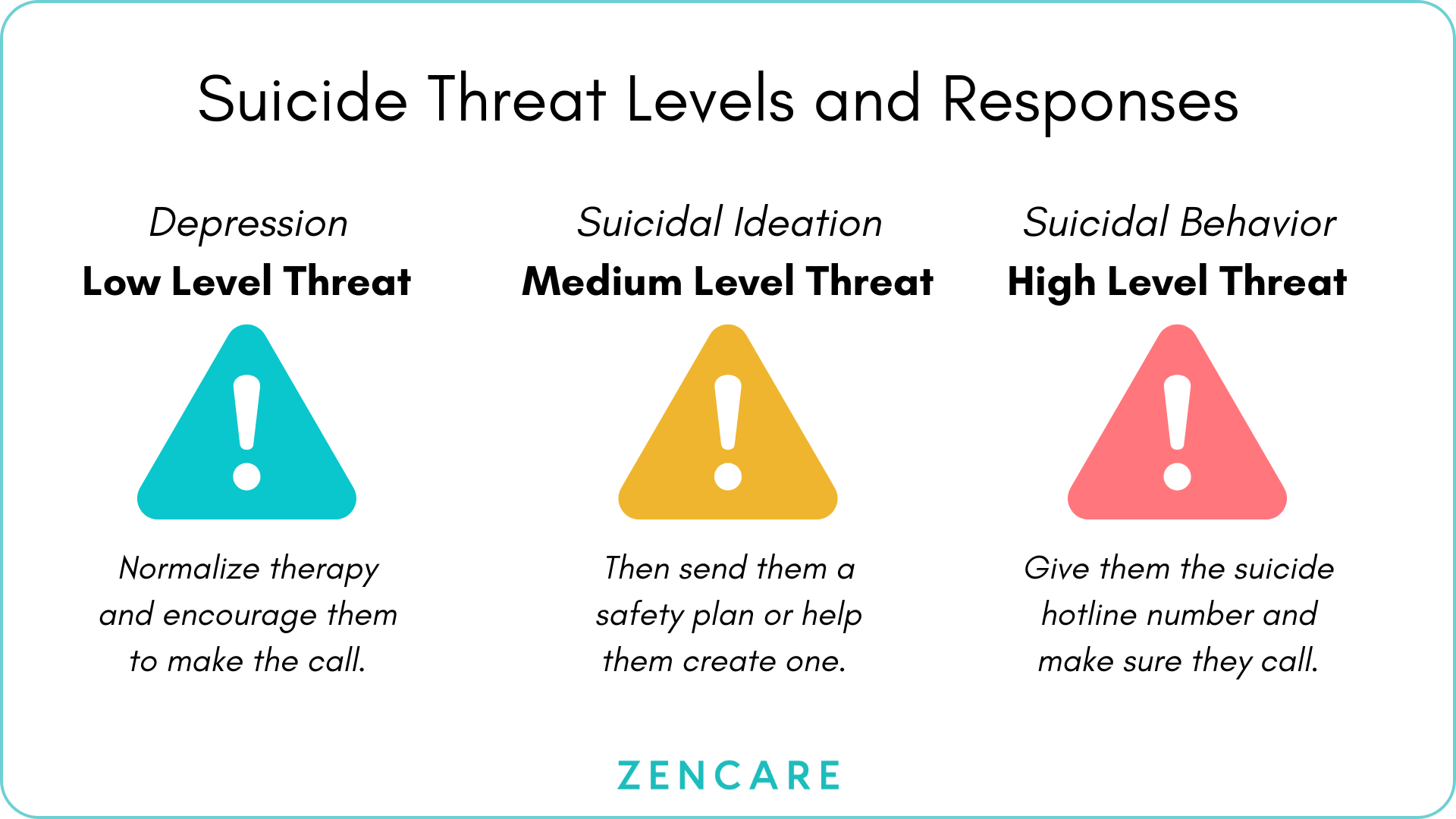Published September 13, 2024 by Zencare Team. Written by Joanna Lovinger, LMFT.
Suicide rates are climbing in America across nearly all demographic groups, but among men the statistics are most alarming. In 2022, white males accounted for 68.46% of all suicide deaths in the country. Psychologists have tried, but nobody has a definitive explanation for what’s going on. Instead, there are multiple theories, and the truth behind the crisis is probably a combination of factors.

Toxic masculinity
One theory involves toxic masculinity, a series of erroneous beliefs and harmful behaviors that stem from traditional ideas about manhood. For instance, the harmful myths that “real men” don’t express their emotions. Or that strong people don’t get depressed. American society has historically been steeped in Marlboro Man-type gender norms that limit men’s ability to connect to each other, express how they’re feeling, or ask for help. The result is that men are diagnosed with depression half as often as women, but they die by suicide between 3 and 4 times more than women do.
High-risk, “rescuer” jobs
Another factor putting men at risk is that many choose dangerous jobs. The suicide rate is higher for people like first responders with high-risk jobs that expose them to daily, intense, traumatic events. Of course, women also work as first responders, but the field is still a male-dominated space. The suicide rates for all first responders — emergency medical responders, police officers, fire fighters — is much higher then the general working population. They’re exposed to trauma every day, but they’re a group unwilling to ask for help because they’re “rescuers” by nature — the ones doing the saving.
The last component of the problem involves lethality. Men succeed with their suicide attempts more than women do. This is largely because men tend to choose more lethal methods to end their lives. Women frequently choose to overdose or die of asphyxia. But men overwhelmingly reach for a firearm because it’s likely to get the job done. Guns outnumbered all other methods of suicide among men in 2020 and the rates for suicide by firearm were highest among men age 65+. But more on guns later.
Depression in men
Depression is insidious in part because it pushes away the people who might best be able to help. Depression convinces people to isolate themselves or reject, attack, or otherwise repel their loved ones. It talks someone out of doing the very things that would reduce depression symptoms, like exercise. Regular exercise is scientifically proven to lift mood, but most depressed people would rather do anything than work out. At its worst, it convinces someone that the world would be better off without him. The only good news about depression is that there are many ways to treat it.
Depression affects men and women differently. Some of the symptoms are the same across all genders: experiencing significant changes in sleep habits, excessive use of drugs and alcohol, no longer enjoying one’s favorite activities, feeling pervasive sadness, a lack of sexual desire, and excessive fatigue. However, men frequently also get the following symptoms: increased aggression, excessive anger, or a growing number of physical ailments.
Experiencing loss and trauma
It stands to reason that people consider suicide because they’re depressed. But pre-existing mental health problems aren’t always the sole cause. There are losses in life that feel too heavy to bear, tragic turns of events, addiction and heartbreak. (This applies to all genders.) Pay close attention if someone you care about begins talking about feeling hopeless, if they say they have no sense of purpose, if they’re suddenly acting reckless, or if they talk about feeling trapped. They’re likely considering suicide.
Now let’s focus on some answers. Read on if you want to learn how to help someone, or a man in your life who may be struggling with suicidal thoughts.
Differences between depression, suicidal ideation and suicidal behavior
You need to understand the “threat level” to determine the best response, so understanding the distinction between depression, suicidal ideation, and suicidal behavior is important. Resources for hotlines, safety plans and crisis resources are shared at the end of the blog post.
Depression — Low Level Threat
Depression is very common. The latest Gallup poll revealed that 29% of adults say they’ve been diagnosed with depression at some point in their life. It’s defined by sadness and losing the ability to find pleasure in things you used to love, over a sustained length of time. If he’s depressed, refer him to a therapist. Send him a link to a therapy matching service like Zencare or a list of recommended providers in your area. Normalize therapy and encourage him to make the call.
Suicidal Ideation — Medium Level Threat
Suicidal ideation is thinking about suicide. You might describe it as a medium level threat. Maybe he’s wishing he hadn’t been born, wishing he could go to sleep and not wake up, imagining ways to end his life. Ideation is common too. With suicidal ideation, refer him to therapist, and give him a suicide hotline number. Ask about a plan, ask about lethal means in his home. If he’s a gun owner, offer to hold onto his gun, just until the threat level clears. Then send him a safety plan or help him create one.
Suicidal Behavior — High Level Threat
Suicidal behavior is when he has a suicide plan, the means (access to a method), and he intends to do it. Maybe he’s already made an attempt. Now you’re at a high level threat. So skip the therapist referral for now. Give him the suicide hotline number and make sure he calls. Later, once he’s safe, you can refer him to a therapist, help him remove any lethal means, give him additional resources like crisis text lines and hotline numbers, and help to create a safety plan.

Seeing a therapist for suicidal thoughts or depression
If he’s nervous about starting therapy, you can tell him what to expect. When he meets with a therapist, in person or virtually, that person must protect his confidentiality or risk losing his/her license and going to jail. The therapist will diagnose him and develop a treatment plan, which might just be talk therapy. It might be a combination of talk therapy and medication, which would mean a referral to a psychiatrist.
Maybe therapy will reveal a link between his suicidal thoughts and a traumatic event in his background. Maybe not. But he’ll learn coping strategies for managing the depressive symptoms and get ideas about how to mitigate life stressors. And he’ll have a place to set his burden down for an hour in the company of a non-judgmental person who wants to see him recover and thrive.
How to help someone who may be suicidal
The most important thing is to put yourself and your feelings aside completely. Just for this occasion. It’s not always easy to do, but if you react in a way that could make him feel that he’s burdening you, he’ll clam up. This would be a missed opportunity to help. What do I mean by putting your feelings aside?
Talking about suicide is very hard. It’s upsetting. And many people subscribe to a religious group that says it’s wrong or sinful. But this is not the time to debate the sanctity of life, or whether his life is worth living. You must drop any stigma you have about men feeling sad. If he cries, don’t react with shock or tears of your own. Don’t talk about how hard it is for you to hear what he’s saying. Say something like this:
You care about him.
You can tell something’s wrong. He’s not himself.
If he admits he’s in a dark place, ask if he’s planning to take his life.
Also, hold his confidence. Don’t share what he tells you with anyone. He’ll (rightfully) feel angry and betrayed if he finds out. But worse still, he won’t open up to you again and it will be another missed opportunity to help.
If you’re struggling with suicidal thoughts, it’s okay to ask for help. Don’t let old, outdated ideas destroy your life or cut it short. Nobody needs to suffer in silence.
Resources
- Call or text 988 Suicide and Crisis Lifeline
- More information visit 988lifeline.org
- Crisis Chat https://chat.988lifeline.org/
- Text TALK to 741741 to text with a trained crisis counselor from the Crisis Text Line for free, 24/7
- For more information visit crisistextline.org
- People who are deaf or hard of hearing and who need support in a crisis can text for help by texting the word “HEARME” to 839863. The service is available 24/7
- How To Use Safety Planning: A Tool for Harm Prevention
- 5 Steps for Supporting a Client with Suicidal Ideation
- 6 Ways to Support a Friend with Depression or Suicidal Ideation
References
- Men’s Health Erica Sweeney “Therapists Explain the Surprising Depression Symptoms for Men” Aug. 26, 2024
- Gallup News Dan Witters “US Depression Rates Reach New Heights” May 17, 2023
- American Psychological Association, Boys and Men Guidelines Group. (2018). APA guidelines for psychological practice with boys and men.
- American Foundation for Suicide Prevention “What to do When Someone is at Risk”
- Men’s Health Sean Evans “Not Talking About Mental Health is Literally Killing Men” May 2, 2018
- Myths About Suicide by Thomas Joiner, Harvard University Press 2010
